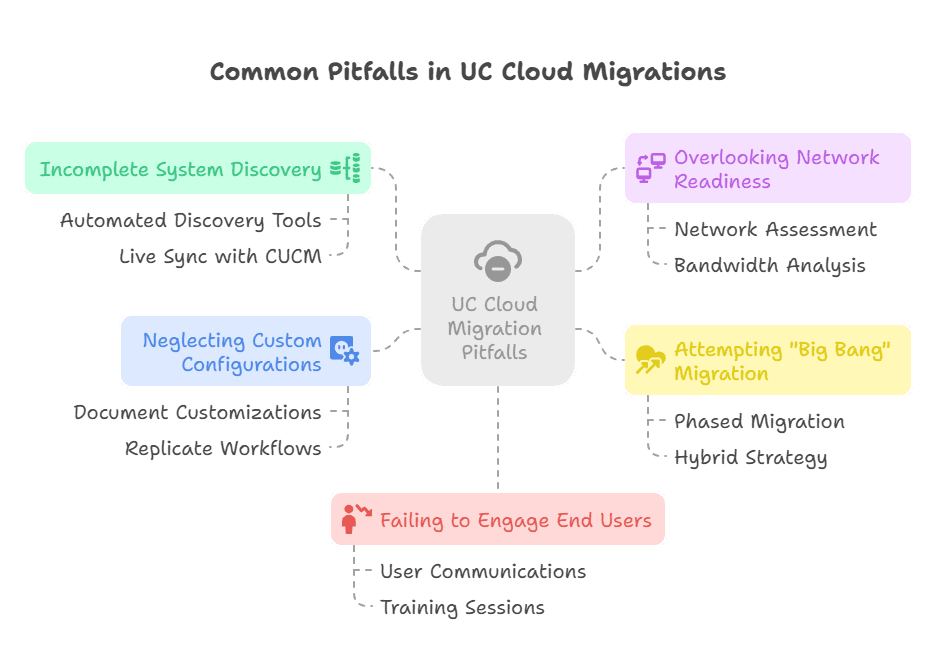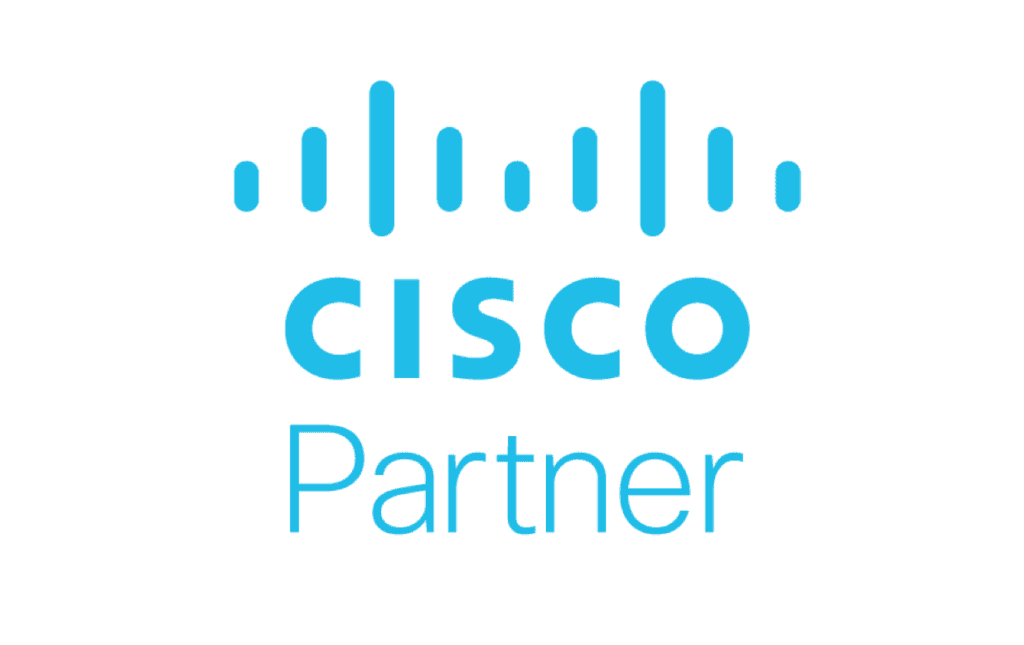Migrating to the Cisco Unified Communications (UC) cloud offers scalability, agility, and modernization. But the journey isn’t always seamless. This blog explores the top 5 pitfalls companies face during Cisco cloud migrations, how to avoid them, and how Tuki can help ensure a secure, efficient, and successful transition.
Why Organizations Migrate to Cisco UC Cloud
The modern workforce is increasingly distributed, demanding seamless collaboration across geographies, devices, and time zones. Cisco Unified Communications cloud solutions, such as Webex Calling and Cisco Cloud Call Manager, address these challenges by providing flexible, scalable, and secure communication infrastructures.
Organizations are turning to Cisco cloud UC for several compelling reasons:
- Cost Efficiency: Elimination of expensive on-premise infrastructure and maintenance
- Scalability: Effortless scaling to match business growth or changes
- Security: Regular updates, enhanced compliance support, and centralized controls
- User Experience: Improved collaboration tools and a modern interface
- Remote Readiness: Cloud-based UC allows consistent service and access regardless of location
Despite these advantages, migrating to the cloud introduces new challenges, especially for enterprises with large or complex UC environments.

1. Incomplete System Discovery and Inventory
Before you migrate, you must know exactly what you’re migrating. Many organizations begin their transition without a complete understanding of their existing on-prem environment. Missing user accounts, inactive devices, or unknown dial plan dependencies can cause major delays and service disruptions.
Solution: Use automated discovery tools to map users, devices, configurations, dial plans, and licenses. Eliminate guesswork by working with a platform that can sync live with your existing Cisco CUCM environment.
2. Overlooking Network Readiness
Cloud communications rely on strong network performance. Insufficient bandwidth, misconfigured firewalls, or inadequate Quality of Service (QoS) planning can all impact call quality and reliability.
Solution: Conduct a full network readiness assessment before initiating your UC migration. Simulate cloud traffic, analyze bandwidth usage, and verify compatibility across locations.
3. Attempting a “Big Bang” Migration
Trying to migrate every user, device, and configuration at once can lead to chaos. One misstep in bulk migration can result in widespread outages, user frustration, and delayed timelines.
Solution: Adopt a phased or hybrid migration strategy. Start with non-critical users or locations, validate performance, and iterate your approach before scaling.
4. Neglecting Custom Configurations and Integrations
Many UC environments include custom routing logic, legacy call queues, or third-party integrations (like CRM or helpdesk platforms). These may not transfer cleanly to the cloud.
Solution: Document all customizations in advance. Work with tools that support customizable workflows and have the ability to replicate or redesign them for the cloud.
5. Failing to Engage and Train End Users
A technically sound migration can still fail if users are not equipped to use the new platform. Resistance, confusion, and support tickets spike when user adoption is an afterthought.
Solution: Include end-user communications, onboarding, and training in your migration plan. Provide how-to guides, live sessions, and a channel for feedback.
Best Practices to Ensure a Smooth Transition
1. Start with a Clear Migration Roadmap
Define your business goals, timelines, and technical priorities early. Align stakeholders from IT, operations, and leadership to ensure everyone is on the same page.
2. Use Automation Wherever Possible
Manual migration processes are prone to error and inefficiency. Automate user provisioning, dial plan configuration, device setup, and license assignment.
3. Adopt Real-Time Sync Tools
Look for platforms that can integrate directly with Cisco UC environments in real time. This minimizes reliance on spreadsheets and reduces human error.
4. Implement Role-Based Access Control (RBAC)
During migration and beyond, enforce access policies to reduce risk and improve governance. Assign roles and permissions appropriate to each team member.
5. Plan for Post-Migration Optimization
Migration is just the beginning. Monitor adoption, call quality, and user satisfaction to optimize system performance.
How Tuki Helps Avoid Costly Cisco Migration Mistakes
Tuki is purpose-built to make Cisco unified communications migration painless, scalable, and secure.
Here’s how Tuki supports every stage of your cloud migration:
- Live Sync with CUCM: Tuki has no static database. It connects directly with your on-prem system, enabling accurate discovery and real-time provisioning.
- Phased Migration Engine: Migrate users and devices in controlled waves. Tuki ensures each step is validated and reversible, reducing risk.
- Smart Templates and Automation: Automate repetitive tasks like assigning extensions, voicemail, and call routing with policy-driven templates.
- Support for Complex Environments: Whether you’re dealing with hybrid deployments, multiple clusters, or global branches, Tuki adapts to your environment.
- End-User Enablement: Tuki offers built-in user communications and feedback tools to ease adoption and reduce support overhead.
With Tuki, organizations transitioning to Cisco’s UC cloud avoid the common pitfalls of legacy migration projects. The result? Faster time to value, reduced IT effort, and higher end-user satisfaction.
Frequently Asked Questions
What are the benefits of migrating to Cisco cloud UC?
Cisco cloud solutions offer reduced infrastructure costs, improved scalability, built-in compliance, and modern collaboration features that empower hybrid and remote teams.
What’s the biggest risk in UC migration?
The biggest risk is inadequate planning, especially skipping discovery, underestimating complexity, or rushing into a large-scale cutover without testing.
What tools help streamline cloud migration?
Platforms like Tuki provide automation, real-time syncing, phased rollout planning, and end-user onboarding features that significantly reduce the time and risk of UC migration.










